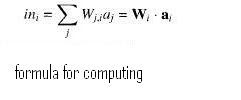
 Hi this a article about the neural network and their importance.
Hi this a article about the neural network and their importance.A neural network is composed of a number of nodes, or units, connected by links. Each link has a numeric weight associated with it. Weights are the primary means of long-term storage in neural networks, and learning usually takes place by updating the weights. Some of the units are connected to the external environment, and can be designated as input or output units. The weights are modified so as to try to bring the network's input/output behavior more into line with that of the environment providing the inputs.
Each unit has a set of input links from other units, a set of output links to other units, a current activation level, and a means of computing the activation level at the next step in time, given its inputs and weights. The idea is that each unit does a local computation based on inputs from its neighbors, but without the need for any global control over the set of units as a whole. In practice, most neural network implementations are in software and use synchronous control to update all the units in a fixed sequence.
To build a neural network to perform some task, one must first decide how many units are to be used, what kind of units are appropriate, and how the units are to be connected to form a network. One then initializes the weights of the network, and trains the weights using a learning algorithm applied to a set of training examples for the task.3 The use of examples also implies that one must decide how to encode the examples in terms of inputs and outputs of the network.
Notation
Neural networks have lots of pieces, and to refer to them we will need to introduce a variety of mathematical notations. For convenience, see the diagram.
Simple computing elements Figure 19.4 shows a typical unit. Each unit performs a simple computation: it receives signals from its input links and computes a new activation level that it sends along each of its output links. The computation of the activation level is based on the values of each input signal received from a neighboring node, and the weights on each input link. The computation is split into two components. First is a linear component, called the input function, int, that computes the weighted sum of the unit's input values. Second is a nonlinear component called the activation function, g, that transforms the weighted sum into the final value that serves as the unit's activation value, a,. Usually, all units in a network use the same activation function
The total weighted input is the sum of the input activations times their respective weights:See the formula you can understand the computing.

No comments:
Post a Comment